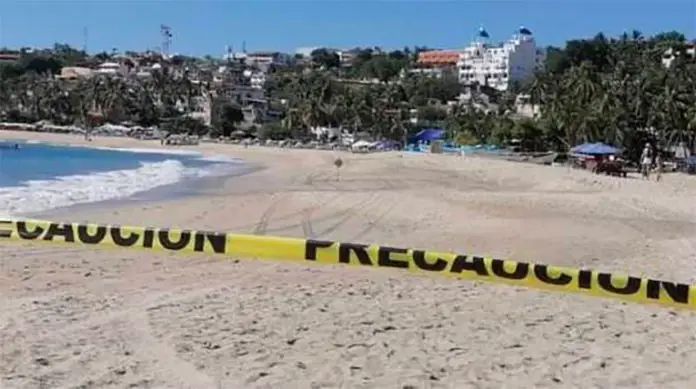Lifeguards in Puerto Escondido, Oaxaca, have created a 100-meter-wide “no people” zone between two of the city’s beaches for a stranded crocodile in the hopes that it can return to a nearby lagoon.
The crocodile has been swimming in the waters off Bahía Principal and Marinero Beach for several days. It was first discovered by a sunbather, who took pictures of it as the reptile tried to enter the beach but got scared off by the presence of people and retreated to the ocean, where it has remained.
The lifeguards who created the crocodile crossing, a restricted area lined with poles and police tape, hope to lure the the 2-meter-long reptile onto dry land and relocate it where they think its destination is: the lagoon in the vicinity of a nearby bridge.
Well accustomed to dealing with crocodiles — American crocodiles are common in the area — the lifeguards said they created the restricted zone after hearing about the crocodile and then spotting it themselves in the water near the shoreline.
They believe it wants to cross land to get to the lagoon but say the animal will stay in the ocean waters as long as it can see humans — hence the no-people zone.
“If it sees people moving on the beach,” he said, “it will go back to the ocean.”
The lifeguards say they have informed local authorities and tourism officials of the situation. Their decision to create the zone is a temporary solution to get the crocodile where it needs to go with the least amount of trauma to the animal.
“It’s so it has confidence and can leave the waters calmly,” said Godofredo Vázquez Bohórquez, the city’s lifeguard coordinator. “If we can trap it to relocate it, that would be easier than trying to do so in the ocean.”
Source: NVI Noticias (sp)
